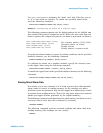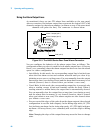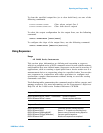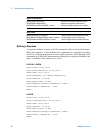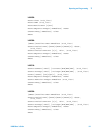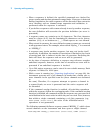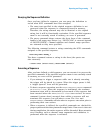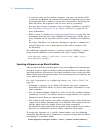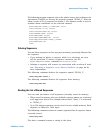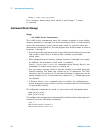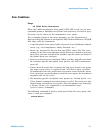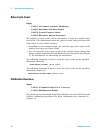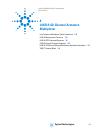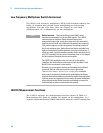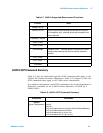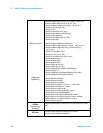Operating and Programming 3
L4400 User’s Guide 95
The following program segment selects the alarm source and configures the
instrument (L4450A) to execute the sequence named “TOTAL_1” when an
alarm (count of 50) is reported on Alarm 1. The Monitor mode is used to
evaluate alarm conditions on the selected channel.
ROUT:SEQ:DEF TOTAL_1,"SYST:DEL 1000"
CALC:LIM:UPP 10.25,(@1301)
CALC:LIM:UPP:STAT ON,(@1301)
OUTP:ALARM1:SOUR (@1301)
ROUT:MON:CHAN (@1301)
ROUT:MON:CHAN:ENAB ON, (@1301)
ROUT:SEQ:TRIG:SOUR TOTAL_1,ALAR1
ROUT:MON:STAT ON
INIT
Deleting Sequences
You can delete sequences to free up space in memory previously allocated for
the sequence.
• If you attempt to delete a sequence while it is executing, an error
will be generated. To abort a sequence execution, use the
ROUTe:SEQuence:ABORt command or a Device Clear.
• Deleting a sequence will remove its association with an alarm if used
(see “Executing a Sequence on an Alarm Condition" on page 94 for
more information).
The following command deletes the sequence named “TOTAL_1”.
ROUT:SEQ:DEL TOTAL_1
The following command deletes all sequences from memory.
ROUT:SEQ:DEL:ALL
Reading the List of Stored Sequences
You can read the names of all sequences currently stored in memory.
• When stored in memory, the user- defined sequence names are converted
to all uppercase letters. For example when stored, “Total_1” is converted
to “TOTAL_1”.
• Up to 500 unique sequences can be stored in non- volatile memory. Each
sequence is limited to 1024 bytes.
The following command returns a comma- separated list of sequence names
currently stored.
ROUT:SEQ:CAT?
The above command returns a string in the form:



